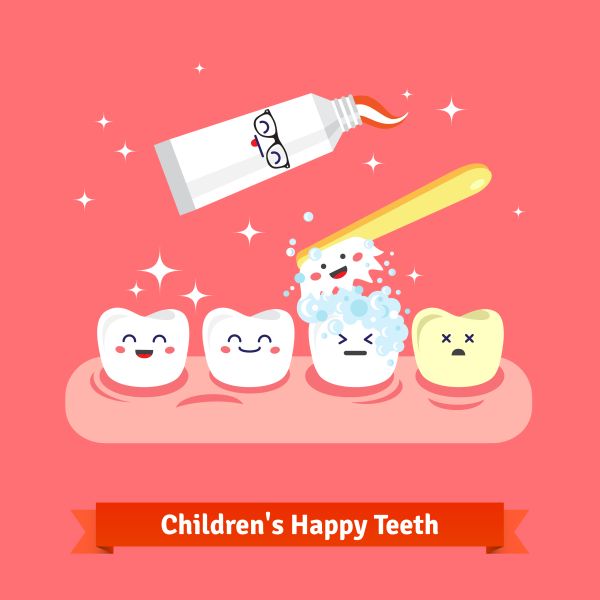Talking to Your Child’s Dentist in Middletown About Dental X-Rays

When a parent goes to their child’s dentist, they are advised to ask the dentist any questions they may have about a procedure or treatment that the child is getting. This rule also applies if the child has to get a dental X-ray, which can be scary to children.
Talking to a child’s dentist in Middletown about dental X-rays
Dental X-rays are beams of energy that pass through the body to make black and white pictures of the child’s teeth and bones. When the X-ray is taken, the child has to sit still for a couple of seconds. Sometimes, the parent may be asked to help the child sit still while the X-ray is being taken. Some dentists take X-ray pictures using films that are placed in the mouth. The films are then processed to make the picture. Other dentists use plastic sensors directly connected to a computer using a wire that allows the parent to instantly see the picture.
If a dentist decides that a child needs to get X-rays, the parent should ask the child’s dentist questions. That will help them let the child know what to expect and put their mind at ease. Some of the questions that parents should ask their child’s dentist include what types of dental X-rays are there and if radiation is dangerous for the child.
The different types of dental X-rays
Bitewing, which are plastic sensors that the child will be asked to bite down on with the back teeth so the dentist can get a better look behind the child’s teeth to check for cavities.
The periapical X-rays that are used to look at the roots of front or back teeth. Each X-ray can only look at two or three teeth.
The panoramic X-ray is taken by a machine that rotates around the outside of the head to take the picture. The pictures taken by the machine can show all the teeth in the mouth and the jawbone.
Cone-beam CT is similar to the medical CT scan but uses fewer X-rays. Even though the cone-beam CT uses fewer X-rays than the medical CT scan, it uses more X-rays than the bitewing, periapical or panoramic X-rays. The cone-beam CT also helps to make 3D pictures. However, it is not used as frequently as the other X-rays.
Will the radiation in X-rays put my child at risk?
There is a very little risk from a single X-ray. However, some studies have shown a small increase in the risk of cancer even at low levels of radiation exposure, particularly in children.
Is it possible to reduce the amount of radiation my child is exposed to?
Due to the fact that X-rays may slightly increase the risk of cancer, the child’s dentist will try to make sure the child is exposed to the lowest amount of radiation possible during an X-ray by doing any of the following:
- X-ray based specifically on the child’s needs instead of routine tests.
- Using up-to-date equipment and techniques
- Using thyroid collars to protect the thyroid gland from radiation and protective shields as needed for other parts of the body.
Conclusion
A child’s dentist will want to perform X-rays to help improve the child’s oral health and detect signs of cavity and tooth decay. If you are a parent and your child’s dentist wants to perform an X-ray, make sure that you talk to the dentist about any concerns you have and to ensure that your child is protected from radiation.
Request an appointment here: https://www.hvkidsmiles.com or call Hudson Valley Pediatric Dentistry at (845) 363-4177 for an appointment in our Middletown office.
Check out what others are saying about our services on Yelp: Read our Yelp reviews.
Recent Posts
An emergency pediatric dentist can help children who are experiencing urgent issues with their oral health. For kids, this most commonly happens due to a blow to the face or an accidental fall, but dental emergencies can arise for any number of reasons. Having an emergency dentist on call ahead of time is a useful…
Sports injuries happen, and sometimes, they cause injury to the teeth or mouth. Fortunately, an emergency pediatric dentist can treat sports-related dental trauma. Their goal is not only to treat the injured tooth but also to restore and preserve the smile's overall health.There are many ways in which the mouth can get injured while playing…
Getting good oral care early in life makes a big difference, but searching “pediatric dentist near me” might not be enough to clarify exactly why. Parents and kids alike can benefit from understanding what a dentist does to help children grow up with strong, healthy smiles, and it goes beyond cleaning the teeth. Here are…
A kids dentist is a dental professional that teaches children how to take care of their teeth and gums from a young age. These practices, when established at an early age, provide the foundation for a lifetime of good oral hygiene. This article covers how this type of dentist can teach kids and their parents…


